Peer Instruction
What does it look like?
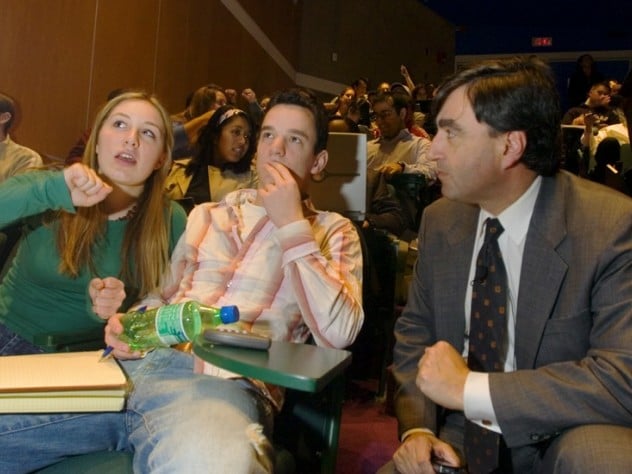


According to Crouch, Watkins, Fagen, and Mazur 2007, "The goal of PI is to transform the lecture environment so that it actively engages students and focuses their attention on underlying concepts. Instead of presenting the level of detail covered in the textbook or lecture notes, lectures consist of a number of short presentations on key points, each followed by a ConcepTest – short conceptual questions, typically posed in a multiple-choice format, on the subject being discussed." In Peer Instruction, the instructor intersperses short lectures with multiple choice conceptual questions called ConcepTests or clicker questions (see below for sample questions). The questions may be written on the board or displayed with a projector. Students use some kind of polling system (clickers, flashcards, or a show of hands) to answer the questions, first after thinking about them individually, and then after discussing them in a group of 2-4 peers. A 1-hour lecture can address approximately four topics, with the presentation structured as follows:
| Presentation of a topic in Peer Instruction | ~15 min |
| Mini-lecture | 7-10 min |
| Question posed | 1 min |
| Students think quietly on their own | 1-2 min |
| Students record/report initial answers | <1 min |
| Students discuss their answers in small groups | 2-4 min |
| Students record/report initial answers | <1 min |
| Feedback to teacher: tally of answers | <1 min |
| Explanation/discussion of correct answer | 2+ min |

Peer Instruction questions may take many forms. The most commonly recommended form is a conceptional question based on research and/or teaching knowledge about common ideas that students are likely to have about the topic. For these questions, both correct and incorrect options should be worded as similarly as possible to the wording that students actually use when answering the question. Instructors can find questions from databases of ConcepTests, or develop new questions by looking at open-ended questions from exams and homework that students have trouble with, and using common student responses as multiple choice options. See Resources for links to question databases and guides to writing questions.
Classroom Video
The anatomy of a clicker question:
The University of Colorado Science Education Initiative has a series of videos illustrating Clickers in the classroom:
To see a video of Brazilian high school students discussing a Peer Instruction question, see this blog post from the Peer Instruction Network blog.
Sample Materials
Below are a few sample ConcepTests collected by Stephanie Chasteen for her workshop "The gentle art of questioning: Writing great clicker questions". You can find many more in the teaching materials section.

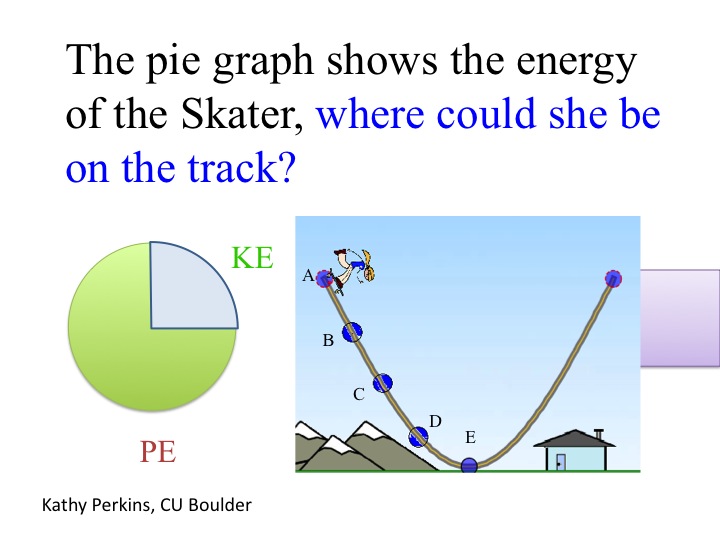
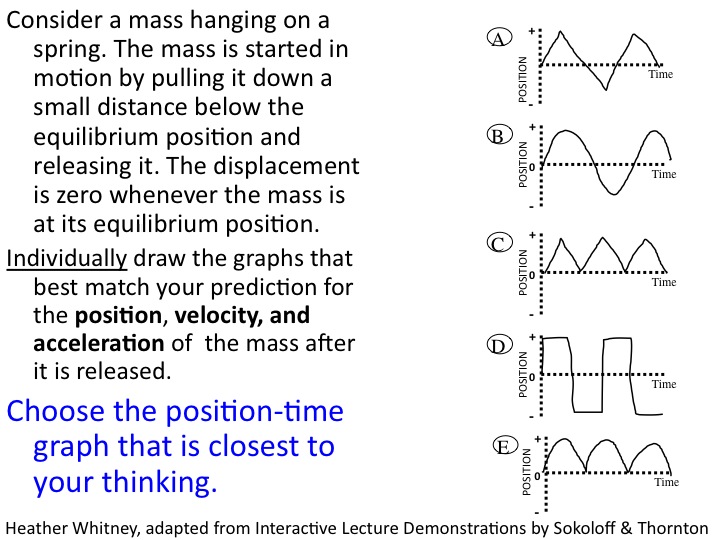
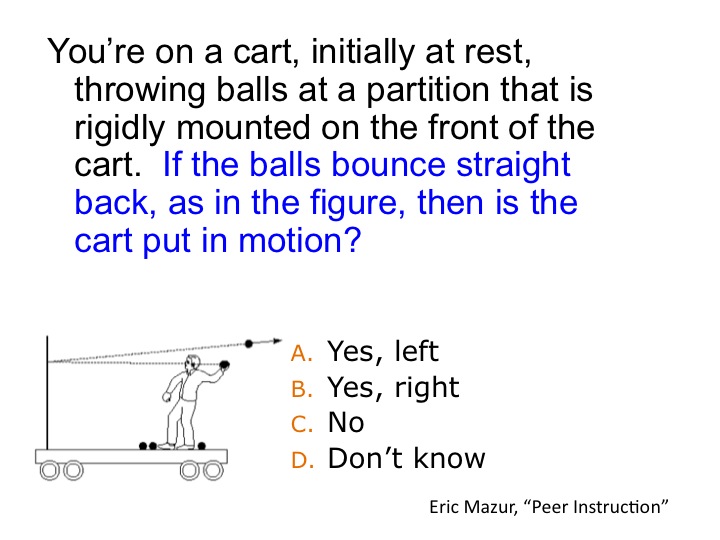
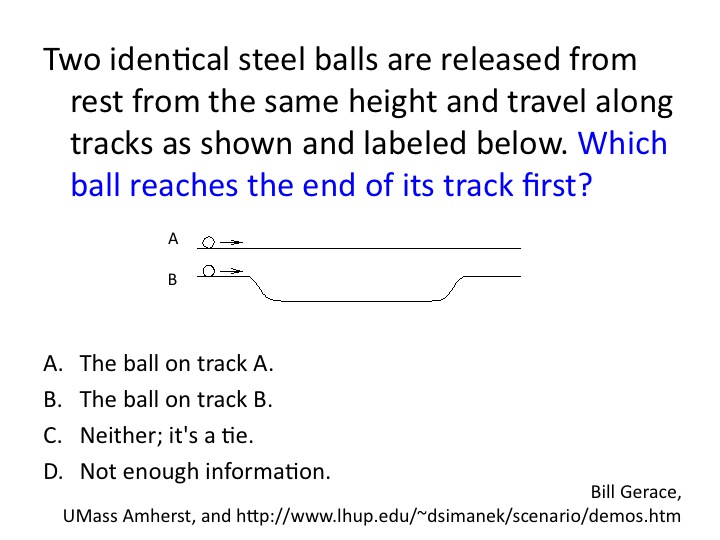
References
- C. Crouch, J. Watkins, A. Fagen, and E. Mazur, Peer Instruction: Engaging Students One-on-One, All at Once, in Research-Based Reform of University Physics (2007), Vol. 1.




